The belligerents in WWII had to improvise time and time again. Obsolete weapons, no longer suitable for their initial purpose, found surprising new applications. One of the most notable examples of such a «second life» is the German conversion of the French 75 mm Mle. 1897 field gun, as a result of which the 19th century weapon became an effective anti-tank gun.
The French Canon de 75 Modèle 1897 (Mle. 1897) arrived on the scene in 1897, and became the first mass produced quick-firing gun equipped with a recoil dampening system. During WWI, it composed the bulk of French artillery, retaining its position in the interbellum period. Additionally, the Mle. 1897 was widely exported.
The gun had a barrel with a liner and a Nordenfelt type eccentric breech block. Hydropneumatic recoil dampeners were installed in the cradle of the upper mount. The carriage was typical for the time: one trail with large diameter wooden wheels, equipped with steel rims. The gun weighed 1190 kg in combat, and its practical rate of fire reached 12 RPM. The maximum range was 11,200 m. The gun was towed with a limber by six horses.
Captured gun
The Wehrmacht obtained its first Mle. 1897 cannons during the Polish campaign in 1939. It is known that 1230 (other sources say 1374) cannons were present in Polish warehouses and units just before the war. They were nearly untouched by modernization. A dozen were modified for mechanized towing, and eight more guns received sights from 37 mm Bofors guns to at least somehow adapt them for fighting tanks. The Poles developed an armour piercing shell for the Mle. 1897, but its new masters took no interest in it. Having captured several hundred Mle. 1897, the Germans sent them into storage, assigning the index FK 97(p). Later, 80 guns were sold to Romania.
The Germans captured many more guns of this type in France. Suffice it to say that the French army had about 4500 of them at the start of the war. Aside from the basic variant of the Mle. 1897, which was indexed FK 231(f) (occasionally the index FK 97(f) is used), the Germans captured many Mle. 97/33 guns, which used a split trail, and metallic wheels with pneumatic tires. These were indexed FK 232(f). Like with their Polish booty, the Germans showed little enthusiasm towards these weapons. Only a small amount of 75 mm guns was issued to second line forces and used in the coastal defense of France and Norway.
Rebirth
The treatment of these trophies radically changed in the summer of 1941, when the Germans encountered T-34 and KV tanks, against which the 50 mm Pak 38 was ineffective. In this difficult situation, a decision was made to accelerate the work on the new Rheinmetall-Borsig 75 mm Pak 40 and Krupp Pak 41 (equipped with a conical barrel and never made it into mass production). Additionally, captured guns would be used as temporary measures. This primarily applied to Soviet 76.2 mm F-22 and USV guns, which had good ballistics, pneumatic tires, a suspension, and a modern split trail carriage. The latter provided for a wide traverse angle, a vitally important feature of an anti-tank gun. The archaic Mle. 1897 with its single trail carriage was inadequate for this task: the horizontal traverse angle was only 12 degrees, which put its lifespan in combat with tanks into question. The Germans were also dissatisfied with the mobility of the Mle. 1897, as it could only be towed by horses.
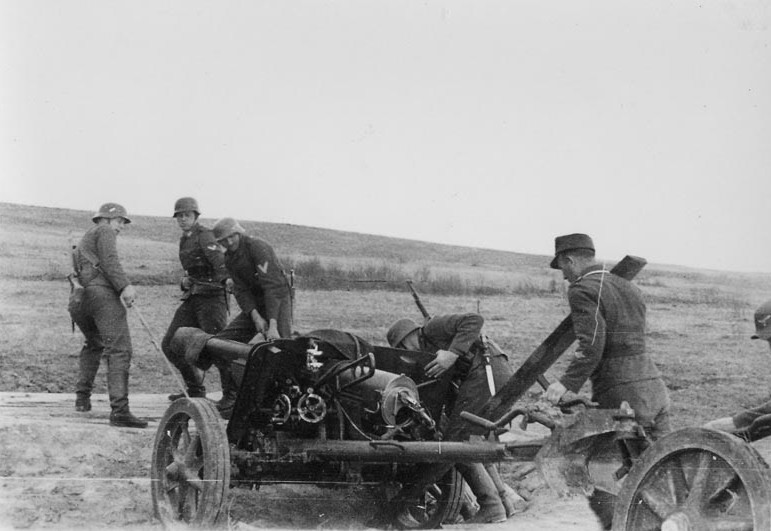
A simple solution was found. The barrel of the Mle. 1897 was placed on the Pak 38 carriage with its split tube trails and wheels that enabled it to be towed by a vehicle. The hybrid was named Pak 97/38. However, this was not a simple combination of a barrel and a carriage. To reduce the recoil (the carriage was originally meant for a 50 mm gun), the barrel was equipped with a single chamber Solothurn muzzle brake. The rear of the cradle was lengthened, and the trigger mechanism was reworked: now pulling the trigger cord only raised the striker, and firing was performed by pressing a button on the elevation flywheel. In addition, the gun was modified to take the Auschilfstrichtmittel 38 sight for indirect fire.
Ammunition
The Pak 97/38 could fire single piece ammunition of various types, both captured (French and Polish) and new German HEAT ammunition, loaded into French casings. The Germans captured 5.5 million rounds of French ammunition for 75 mm guns of the following varieties:
|
French designation |
German designation |
Shell mass, kg |
Muzzle velocity, m/s |
Maximum range, m |
|
Mle. 1900N |
7,5 cm Sprgr Patr 230/1(f) |
5.3 |
550 |
7600 |
|
Mle. 1915FN |
7,5 cm Sprgr Patr 231/1(f) |
5.51 |
550 |
7600 |
|
Mle. 1917 |
7,5 cm Sprgr Patr 233/1(f) |
6.1 |
570 |
10,000 |
|
Mle. 1918 |
7,5 cm Sprgr Patr 236/1(f) |
6.5 |
555 |
10,000 |
The index 7.5 cm K.Gr.Patr.Pz. (p) referred to a Polish armour piercing shell without a ballistic cap. The shell's mass was 6.8 kg, and its muzzle velocity was 570 m/s. The shell was rarely used, as its penetration was considered insufficient (less than 60 mm).
Three types of HEAT shells were developed in Germany for the Pak 97/38: the 4.4 kg 7,5 cm Gr.Patr. 97/38 HL/A(f) and 7,5 cm Gr.Patr. 97/38 HL/В(f) and the 4.8 kg 7,5 cm Gr.Patr. 97/38 HL/С(f). The muzzle velocity of all these shells was 450 m/s. The penetration was up to 90 mm at 90 degrees and 75 mm at 60 degrees.
The focus on HEAT shells was a necessary evil, caused by the low muzzle velocity of the Pak 97/38's ammunition. At the time, the production quality of HEAT shells was poor. The amount of penetration varied greatly, which created issues penetrating targets with armour that was close to the shell's limit. HEAT shells also generally have issues with penetrating highly sloped armour, which meant that this weapon had difficulty penetrating the T-34's upper front plate. The low muzzle velocity limited the gun's range, which increased the risk of the gun being destroyed.
Mass production of shells for the Pak 97/38 was set up in Germany. 2.8 million HE and 2.6 million HEAT rounds were produced in Germany between 1942 and 1944. As of January 1st, 1945, the Wehrmacht's warehouses contained 907,900 HE and 714,100 HEAT rounds.
Production
Conversion of Mle. 1897 guns to the Pak 97/38 was performed in 1942 and 1943, and made sense economically: the conversion of one gun cost 8000 Reichsmarks and took 1500 man-hours. A full conversion took four months. Meanwhile, the Pak 38 and Pak 40 took 6 months to produce, and were much more time consuming and expensive: the Pak 38 consumed 10,600 Reichsmarks and 1800 man-hours, and the Pak 40 took 12,000 Reichsmarks and 2200 man-hours.
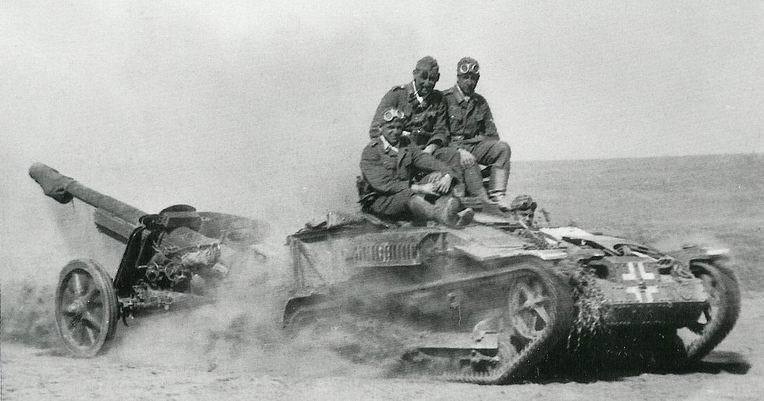
Overall, 3712 Mle. 1897 guns were converted: 2854 in 1942 (to compare, 2114 Pak 40 guns were made that year) and 858 in 1943. The last 160 units were the so called Pak 97/40. These guns used the Pak 40 carriage, freed up when the guns migrated to Marder tank destroyers. The Pak 97/40 weighed about 200 kg more than the Pak 97/38, while retaining the same ballistic qualities.
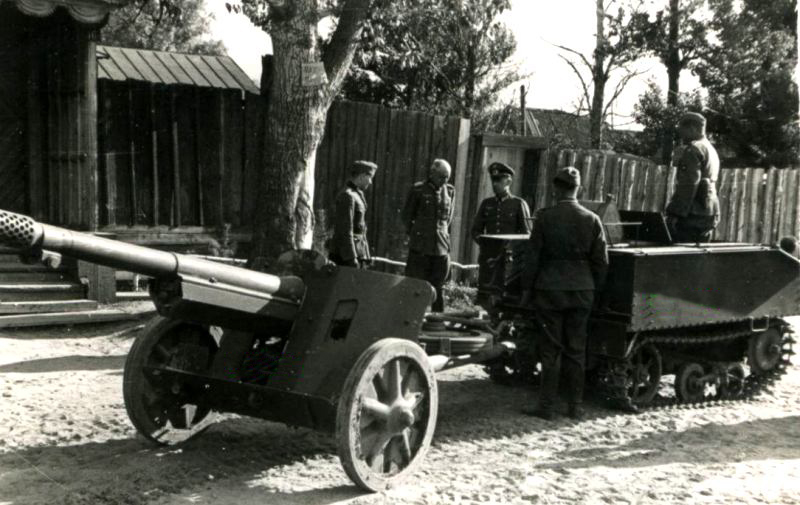
Service and battle
Supplies of the Pak 97/38 began in mid-1942, coinciding with the beginning of the penetration of German forces towards Stalingrad. They were used to arm divisional and regimental anti-tank units. Officially, infantry divisions were only issued 75 mm guns in February of 1943: 12 guns in one company of the anti-tank battalion, and 9 each in anti-tank companies of infantry regiments (39 per division in total). The official TO&E only mentioned the Pak 40, and there was not a single word about the Franco-German ersatz in it. The history of the Pak 97/38 is a perfect demonstration of the fact that rules in the army are just guidelines, and deviation often brings improvements. The 6th ARmy received 174 75 mm anti-tank guns in June of 1942 (111 Pak 40 and 63 Pak 97/38), and immediately put them to use. Its 75th Infantry Division claimed 59 Soviet tanks (4 KV, 51 T-34, and four light) between July 13th and 19th, 30 of which were claimed by the 75 mm gun squadron. A report on the new weapon reads:
«The effectiveness of the 7.5 c Pak 40 is wonderful…
The effectiveness of the Pak 97/38 with HEAT shells is also good, aside from the case where a KV tank was hit eight times without a single penetration."
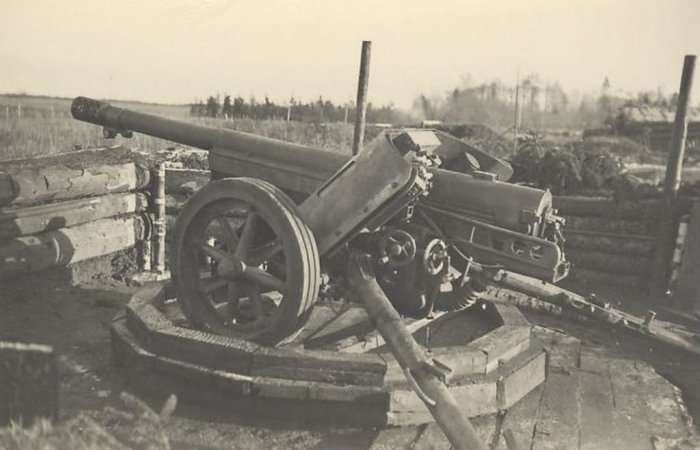
As mentioned above, the production of Pak 40s in 1942 was about a third less than the Pak 97/38. In addition, many Pak 40s were used to make Marder tank destroyers. These SPGs were used to arm tank destroyer battalions and companies in tank and Panzergrenadier divisions, but the most effective anti-tank measure in infantry divisions on the Eastern Front was still the Pak 97/38. In the first half of 1943, a typical infantry regiment's anti-tank company was armed with a pair of 75 mm guns, a pair of 50 mm guns, and eight almost useless 37 mm door knockers. Even though 75 mm guns were the minority for a long time, they were noticeably effective in the summer and fall of 1942. Having received these guns, infantry units could combat heavy and medium tanks without using 88 mm AA guns. Soviet commanders now had to consider the growing firepower of German anti-tank batteries. Without suppressing them using their own artillery, a tank attack could stall.
Aside from the Wehrmacht, the Pak 97/38 was used by the SS (having received 96 guns in May of 1942) and the Luftwaffe. Field divisions received 339 guns in January of 1943, and 21 more in March.
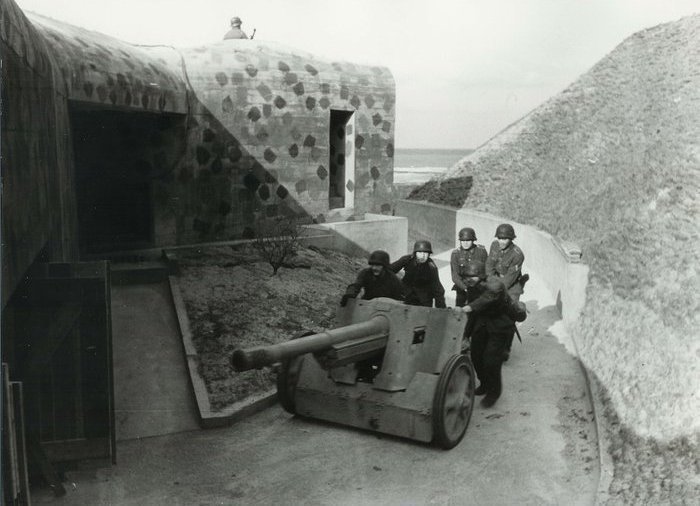
From Jun to December of 1942, the Wehrmacht lost 159 Pak 97/38 guns, and 643 in 1943. Three quarters of these losses were at the start of the year, during the finale of the Battle of Stalingrad. In 1944, 594 losses were reported (43% of them in the summer). Finally, fifteen Pak 97/38 were lost in January-February of 1945. According to official statistics, 1411 Pak 97/38 guns were lost in total. However, the Wehrmacht only had 14 Pak 97/38 guns as of March 11th, 1945, and 108 (including some amount of FK 231(f)) could be found in warehouses. Therefore, one can calculate that the real losses were significantly higher, or that the reports did not include guns captured in warehouses.
Aside from the Eastern Front, a small number of Pak 97/38 were used in Libya and Tunis. They also found a use on the Atlantic Wall. Captured Pak 97/38 guns were also used by British units in North Africa and resistance forces during the Liberation of France.
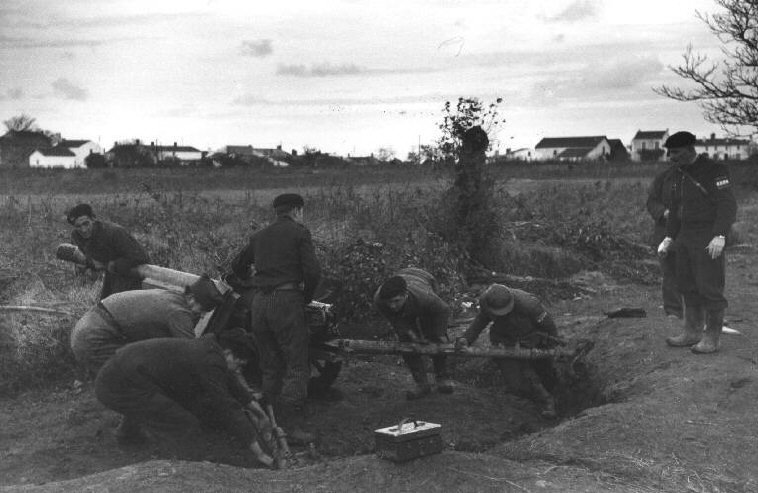
The Pak 97/38 was not particularly popular in the army. Even though they were superior to the low caliber anti-tank guns, they were still not as good as the «pure Aryan» Pak 40. Another drawback of the Pak 97/38 was the light carriage. It made the gun unstable while firing, and there were breakdowns during travel. An order had to be given in September of 1942, limiting the towing speed of the gun to 20 kph.
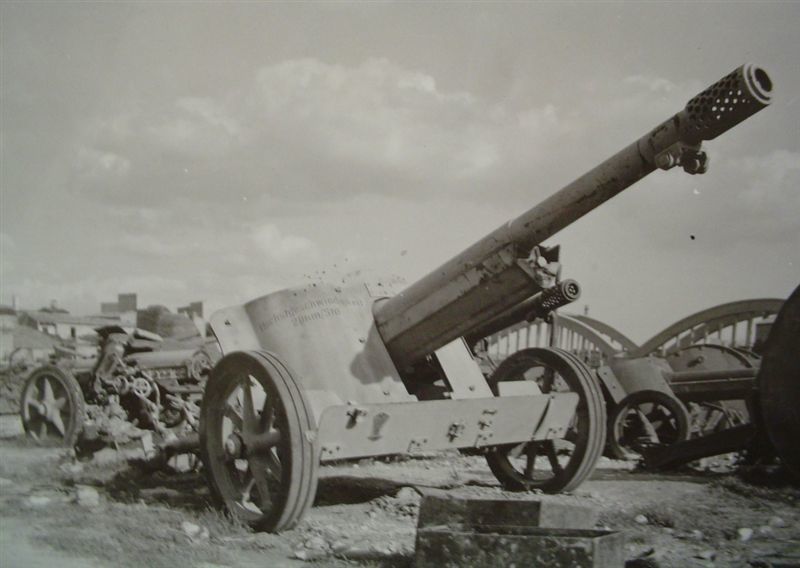
Unlike captured Soviet 76.2 mm guns, the Pak 97/38 was rarely used in self propelled guns. The only exception was a small batch (10 units) of 7,5 cm Pak 97/38(f) auf Fahrgestell Panzerkampfwagen T-26(r) tank destroyers. These were typical field improvisations: the gun, with its stock shield and upper mount, was installed on top of a turretless T-26 tank. These guns were used by the 3rd company of the 536th Tank Destroyer Battalion, but they were replaced with Marders in March of 1944.
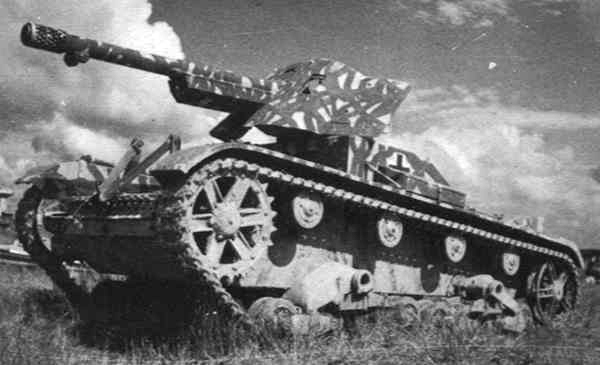
The Third Reich's Allies
Germany's allies, Romanian and Italian units, also fought at Stalingrad. Their armament was inferior to that of the Germans, and the latter took measures to beef up their brothers in arms. Starting with October of 1942, infantry divisions of Romania's 3rd and 4th Armies received one 6-gun battery each. The same batteries were introduced into nine divisions of the Italian 8th Army (the Italians referred to the Pak 97/38 as Cannone da 75/39). In November of 1942, the Pak 97/38 was first delivered to Hungary. In total, the country received 43 guns. Some amount of guns was passed on to Bulgaria in the summer of 1943. In total, the minor Axis powers received at least 517 Pak 97/38 guns.
The Pak 97/38 had its own history in Finland. The country purchased 48 captured French Mle. 1897 guns and 50,000 shells in 1940. Initially, they were used in fortresses under the index 75 K 97. In February of 1943, Finland turned to Germany with a request to convert these guns to anti-tank guns. 46 guns were converted. 30 were finished in March, and the remaining 16 in May. The gun received the index 75 PstK/97–38, and the soldiers nicknamed it Mulatti (mulatto), referring to it being a mix of two guns. Seven guns were lost in battle against the Red Army in the summer of 1944. The remaining 39 were stored in warehouses for decades, and only written off in 1986.
Evaluation
Like any weapon, the Pak 97/38 had its advantages and drawbacks. Its low cost, small size, and ammunition that expanded its applications can be counted among the former. HEAT shells had satisfactory properties, allowing the gun to penetrate the T-34 from any side and the KV in the side or rear. On the other hand, the low muzzle velocity limited the maximum effective range to about 500 meters and reduced precision. Overall, the Pak 97/38 was a decent temporary solution, which allowed the saturation of infantry units with anti-tank guns until Pak 40 production got off the ground.
Tactical-technical characteristics of the Pak 97/38:
|
Caliber, mm |
75 |
|
Mass in combat, kg |
1190 |
|
Barrel length (rifled section), mm/calibers |
2722 (2489)/36.3 |
|
Crew |
7 |
|
Rate of fire, RPM |
10-12 |
|
Range, m |
10,000 |
|
Horizontal arc, degrees |
60 |
|
Vertical arc, decrees |
-8 to +18 |
|
HEAT shell mass, kg |
4.4-4.8 |
|
Muzzle velocity, m/s |
540 |
|
Penetration at 500 m, mm |
75 |
Translated by Peter Samsonov. Read more interesting tank articles on his blog Tank Archives.
Sources:
- Haupt W. Panzerabwehrgeschütze 3,7-cm — 5,0-cm — 7,5-cm — 8,8-cm-Pak. — Waffen-Arsenal, Band 117.
- Skotnicki M. Armata przeciwpancerna 7,5 cm Pak 97/38. — Nowa Technika Wojskowa, 2006, Nr. 7.
- Isaev A. Stalingrad. — M .: Yauza, EKSMO, 2014.
- Kolomiets M. Anti-tank artillery of the Wehrmacht. — M.: Strategy-KM, 2006.
- Haruk A.I. Wehrmacht artillery. — M .: EKSMO, 2010.
- http://www.panzerworld.com/tank-combat-firing-methods.






